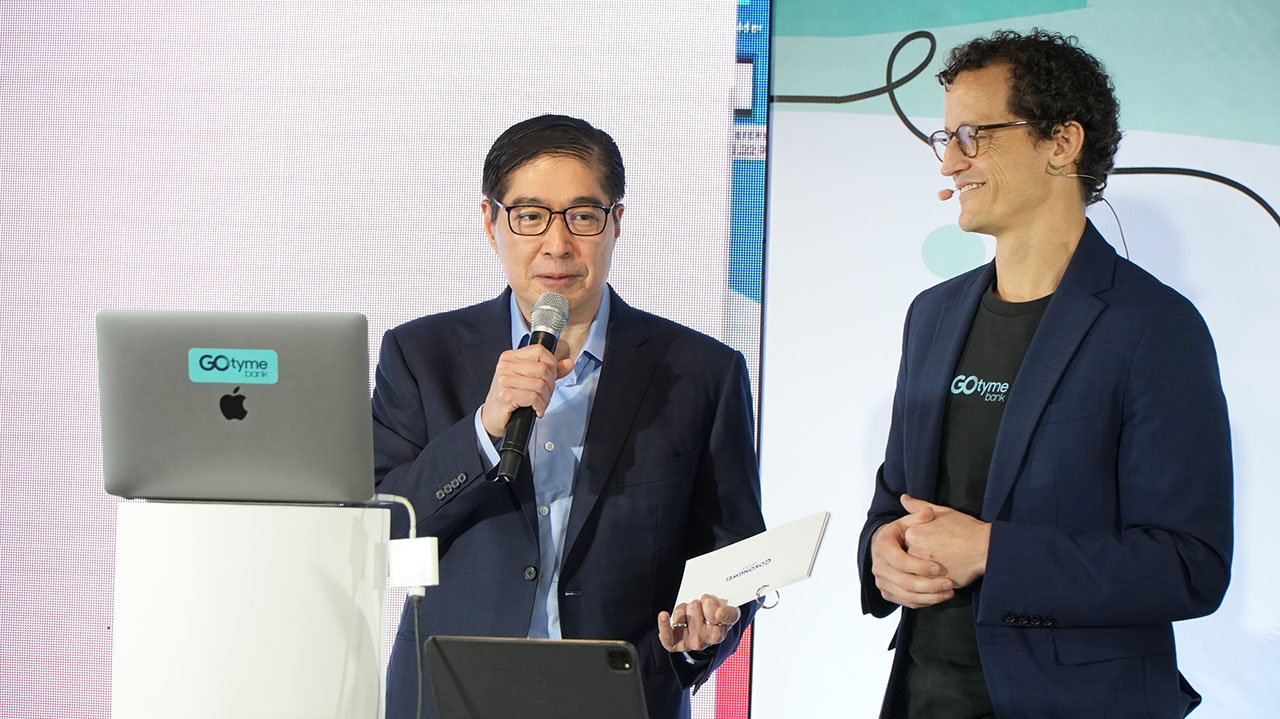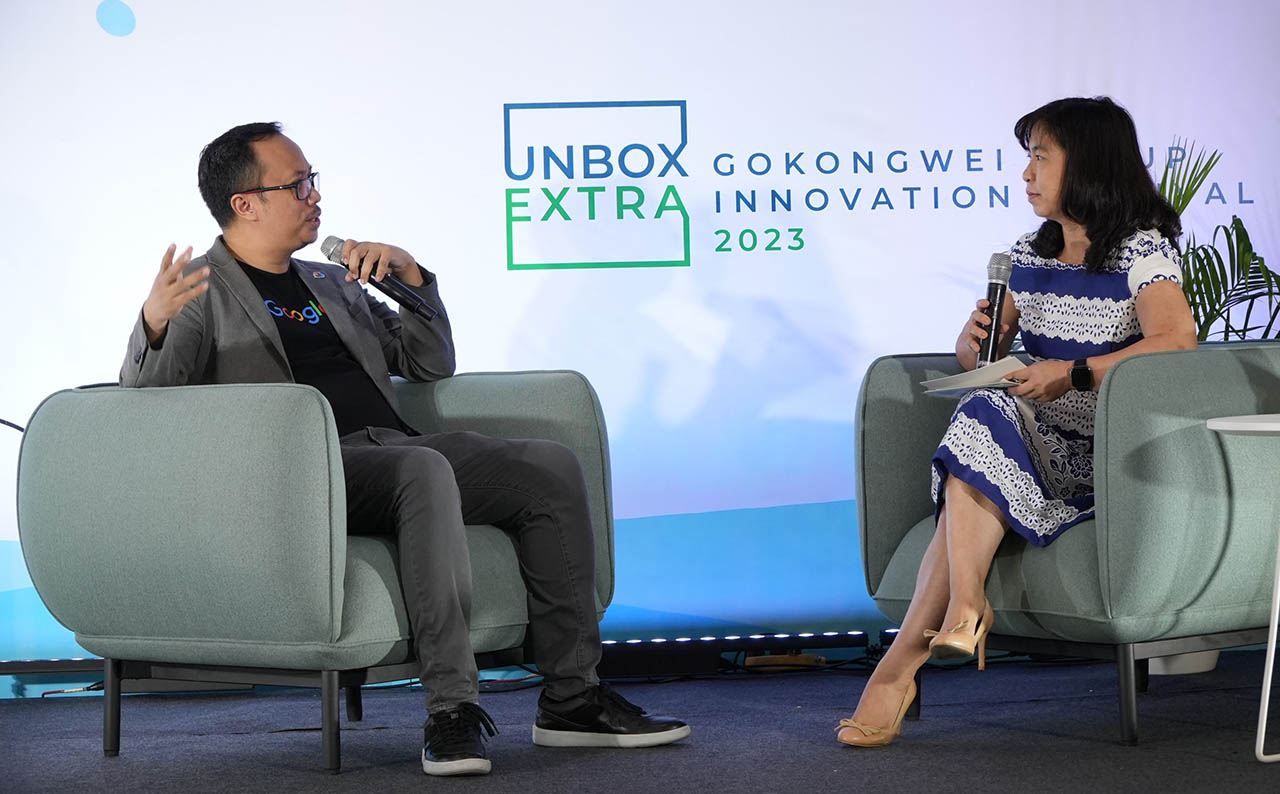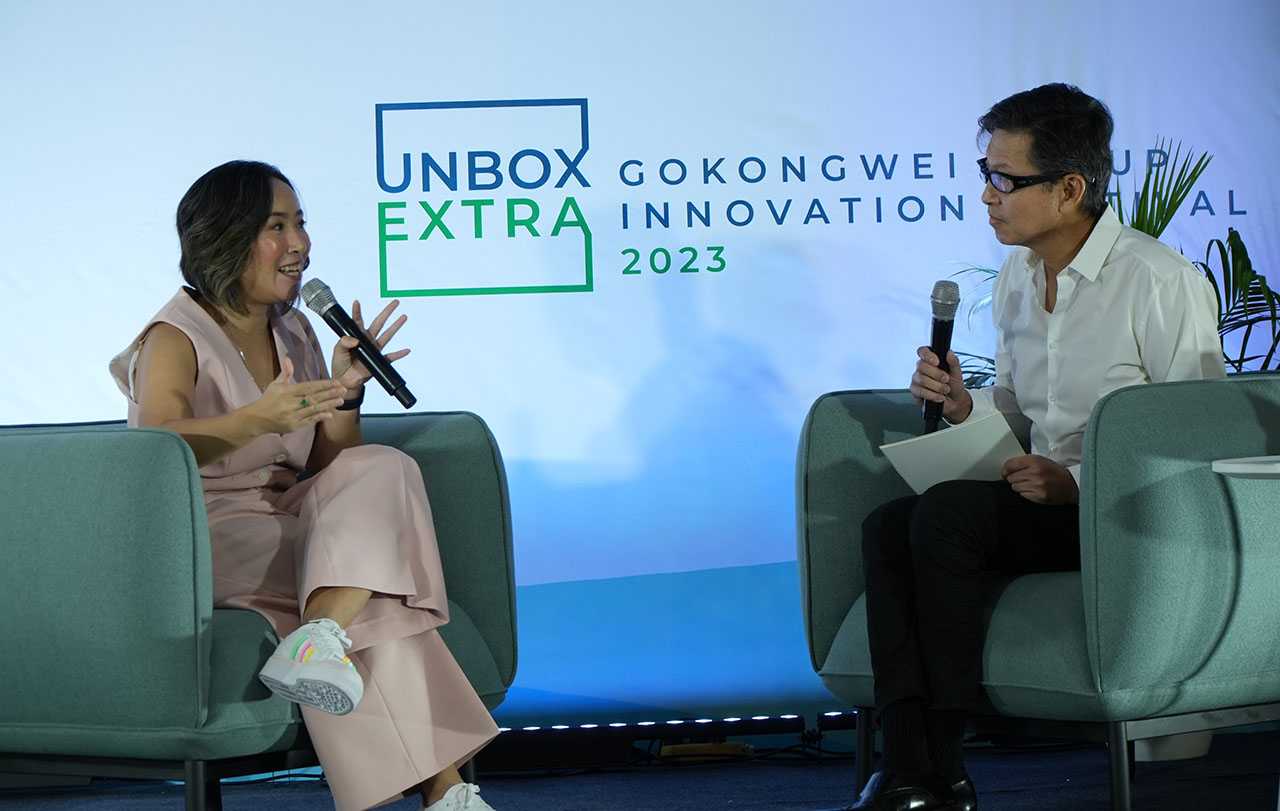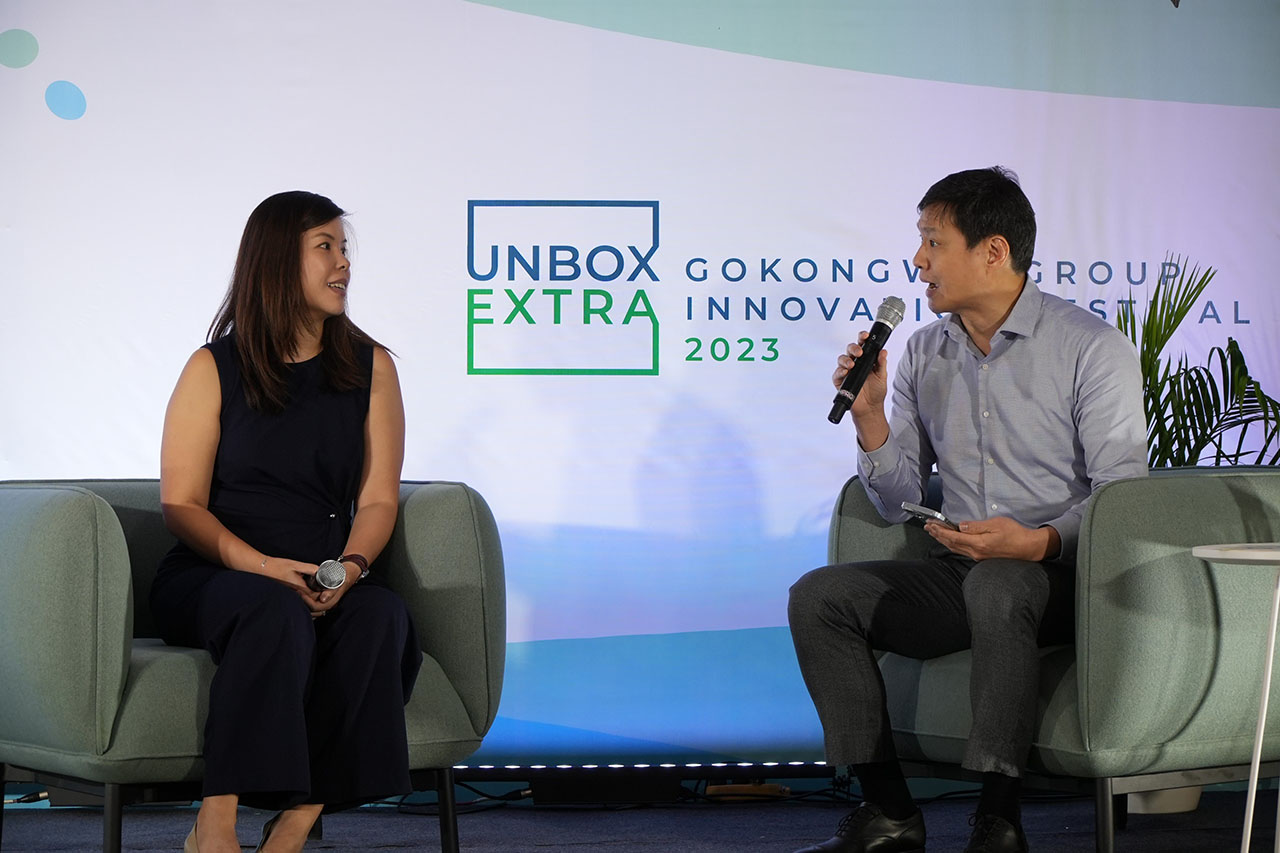For its third edition, the Unbox Extra Gokongwei Group Innovation Festival focused on Generative AI, one of the most-hyped technological advancements readily available for public use today.
GenAI is revolutionizing the business landscape by enabling companies to automate and enhance various processes, from content creation and personalization to predictive modeling and innovation, to drive efficiency, creativity, and create a competitive advantage.
To enable their colleagues in the Gokongwei Group to obtain a better grasp of GenAI and its potential applications or “use cases” in the workplace, JG Summit’s Digital Transformation Office lined up a series of talks by esteemed industry experts on the subject.
After being held online for the past two years, this year’s Unbox Extra was conducted in hybrid fashion, with about 80 employees from throughout the group watching the event in person at Summit Media’s headquarters, while over 2,000 viewed it online via Microsoft Teams.
For the day’s first presentation, Boston Consulting Group’s Anthony Oundjian and Julian Cua opened up the audience’s eyes to the wide array of GenAI use cases that could have a significant impact on the Gokongwei Group’s business units.
For one department alone, a chart with more than 50 potential applications in all stages of production, from product design and development, operations, sales and marketing, to customer support and corporate functions such as HR, finance, and procurement, was revealed.
When using GenAI, Cua advised business leaders to note the distinction between “table stakes” and “golden” use cases, defining the former as the low-hanging opportunities that all businesses could start exploring immediately using off-the-shelf solutions, such as the publicly available ChatGPT from OpenAI, Bard from Google, and the Bing chatbot from Microsoft. Golden use cases, however, involve companies creating specific solutions to their problems to give them a distinct competitive advantage.

In the next segment, ChatLYG, Lance Y. Gokongwei, JG Summit President and CEO, had a brief Q&A with Boston Consulting’s Oundjian and GoTyme Bank’s President and CEO Nate Clarke.
Asked about whether GenAI is a flash in the pan, similar to the hype surrounding blockchain technology ten years ago, Oundjian compared the release of GenAI to the iPhone. Speaking about ChatGPT in particular, he said, “I think what is really different in this case is the immediate relevance for so many people. It was very striking to see how quickly one million plus people downloaded the app and started to use it.” [For the record, it was 5 days after its launch in November 2022.] Oundjian added, “What you see now in terms of activity in the industry, in terms of changes that are in place, suggests that it's actually a life-changing technology.”
For his part, Clarke mentioned that AI has long been in use by the Tyme Group, such as in financial credit modeling, among other applications. In GoTyme, artificial intelligence will be used to augment the existing marketing and customer care capabilities of the bank. With the help of GenAI, Clarke says the bank is gearing up to position itself as the bank with the best customer service. “With this, we are going to make our agents and our customer success advocates multiple times more productive.”
Chiming in about the public’s perception about how GenAI could have an impact on people’s jobs – a topic that was addressed several times during the Unbox Extra sessions – Gokongwei said that if people adapt and learn new skills to accommodate the technology, great opportunities will emerge. “Like all major breakthroughs such as the advent of the computer, the internet, or even the smartphone, we need to have an open mind and view this technology as a friend. It is a powerful tool that complements our human intelligence and creativity. However, we cannot be totally or overly dependent on it. The information it churns out may not always be 100% accurate, at least for the time being.”
Despite GenAI’s current limitations, Gokongwei believes the technology “is very promising and will continue to evolve, necessitating the upskilling of workers. Tomorrow's Gokongwei Group workers will be equipped and comfortable to work in synergy with Gen AI. For the workplace of our future, we'll be relying heavily on the collaborative intelligence of humans and technology.”
In the next talk, “Data Analytics and Generative AI”, Jan Jaudian, Customer Engineering Manager of Google Cloud, shared Google’s framework when trying to solve problems. The company always asks, “______ was the answer; what was the question again?” The implication is that if GenAI is prompted with the wrong type of questions, you may get a correct answer but it still does not solve the problem at hand.

Jaudian noted that among businesses that initiate pilot projects using AI, only 10% are able to successfully scale this in their organizations. One of his proposed solutions is democratizing AI and democratizing data. “AI and the tooling for AI needs to be built around every persona in your organization — These would be product managers or machine learning engineers, or it could just be business users that don't want to bother with the technical aspects. It should be available across the organization.”
In the segment “Process Improvement Using Generative AI”, Suzanne Lee, Director of Data and Analytics for JG Summit DTO, discussed the practical ways today’s workforce can simplify their daily tasks such as transcription, summarization, data processing, and insight extraction with the many GenAI tools currently available for public use. However, she had a few caveats. Among her tips was to be cautious when using tools that are still in their Beta versions, to check if the GenAI product can allow you to test on a specific use case before purchasing it, and find out if there are tools already integrated with the products that you might already have, such as the built-in GenAI apps in Microsoft 365.

In “Product Development and Innovation,” Winnie Wu, Associate Partner at McKinsey & Company, spoke about the use of GenAI in product design and development. Hammering home one of the key points in an earlier Unbox Extra session, Wu said the human element – particularly asking the right questions or prompts – is vital for GenAI to do its job properly.
When building custom LLMs, “prompt engineering requires a researcher or a designer, because you require that user language to be rooted in your prompts to get good feedback, good output from the GenAI tool,” said Wu. Then, after the AI tool creates a series of designs, “it takes also a design eye to be able to parse out the version that actually suits what we're looking for in our specific context.”
Another thing to remember is that unless you are feeding the LLMs with your own specific data, the existing data sets used to generate their responses, whether text, images, or designs, are at least 18 to 24 months old. “As much as it's super helpful in accelerating our understanding of the market, true research is still needed, because trends and consumer behavior change faster than these GenAI training data sets,” cautioned Wu.
Nevertheless, she encourages everyone to try out GenAI for themselves. Sharing the quote “The best way to learn is by doing,” by Richard Branson, Wu says to tinker and try out these tools and see how we can apply it to our own day-to-day and work activities.
Stephanie Sy, Founder and CEO of Thinking Machines, next explored the benefits of GenAI in improving the customer experience, while also citing the importance of creating guardrails to protect companies against privacy risks or data leaks. Building on what the day’s previous speakers said, Sy said to think of GenAI as an intern and then think about the type of instructions or guidance the best bosses in your own career gave you. “The results that you get are as good as the instructions you give. If you give a smart intern bad instructions, you're going to get bad work back. Same with the concept for large language models. It's really good for first drafts. It can take in more rounds of feedback.”
Results from GenAI are also not 100% perfect, warns Sy, so we mustn’t fully rely on it for tasks such as research. Then, just like with humans, there is the possibility that GenAI can fall prey to scams when used for customer experience applications. Sy mentioned that there are risks if GenAI is fully automated in customer care systems and erroneously end up giving users with malicious intentions an additional number of bonus miles or points, for example, hence the necessity for guardrails and system controls.

In “Empowering Employees”, Janet Uy, Senior Cloud Solution Architect Manager for Data and AI at Microsoft and Kalpana Bansal, Solution Head for AI and Talent of Darwinbox, took turns discussing GenAI’s impact on the workplace.
Uy said that with GenAI, “a new wave of productivity growth is coming.” Taking a cue from the name of Microsoft’s GenAI tool, Copilot, she said that instead of viewing AI purely as an automation tool, like the autopilot system on a plane, we should see AI as a co-pilot augmenting our human skills, intelligence, and ethics. Instead of assuming that AI is going to do all the work for us, think about how we can all do well to adapt to the new ways of working. Because GenAI will rely on us humans to build the LLMs, it is our responsibility to ensure that AI is programmed properly, that it is effective, and above all else, that it is ethical.
Taking the viewpoint of an HR professional, Bansal talked about the skills and mindsets that we need to develop or hone in the age of AI. “What we see working very effectively is, one, having an eye for detail, because that's something that – whether you have AI or not – still works.” She described how it was the very detailed human inputs that went into Darwinbox’s own LLM that made it work with great accuracy. The second skill to develop is “open mindedness and flexibility to accept or blend different technologies and mindsets while you look at a solution,” says Bansal. “These two go a long way towards making AI very effective in the end.”
Similar to previous Unbox Extra sessions, this one ended with a recap from Lisa Gokongwei-Cheng, Senior Vice President for Digital Transformation and Corporate Services.
These are her key takeaways:
- Gen AI will not replace us. However, it will make us bionic. It will help us do more engaged work, as Stef Sy says, to help us accomplish exceptional work instead of "pwede na” work. This is why our partners at Microsoft called their tool Copilot. It is envisioned to help us increase our productivity and augment our work.
- It's important to distinguish what BCG calls table stakes use cases and golden use cases. Table stakes use cases can be solved with off-the-shelf solutions, while golden use cases are those that establish a competitive mode.
- We will need to build agile and iterative organizations and cultures to leverage this technology. The goal is to democratize data. We should consider upskilling our colleagues no matter what department as well to leverage this technology.
- There are a lot of tools already out there, and, as many of our speakers have said, experiment.
- We are at the cusp of a huge disruption brought about by AI, but we must be careful about its capabilities. Do not rely on it for facts. Make sure you have the governance and the guardrails in place, and do not expose your enterprise secrets in public AI.


